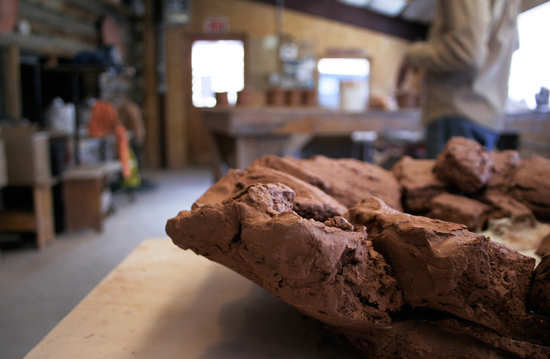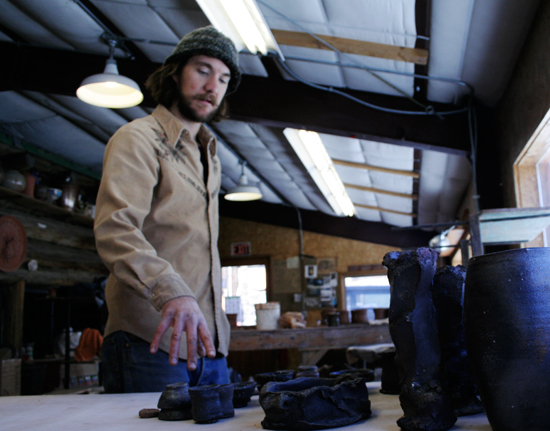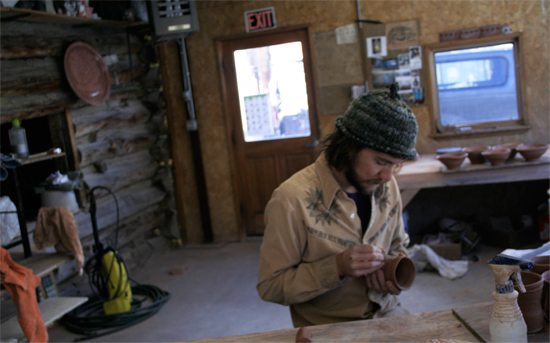There is an argument to be made that we are all just a product of our surroundings. Ceramicist Tom Alward is a perfect example of this. Using local materials, and characteristics of his immediate setting, Tom makes functional pots that highlight a combination of his personal taste and environment.
BIO
Raised in the southwest, Tom Alward studied ceramics at Northern Arizona University. He went on to pursue his work in various settings including Virginia, North Carolina, and Australia, with a Windgate Fellowship. At Anderson Ranch, Tom intends to continue his exploration of clay with an elemental and natural approach, to ultimately convey a sense of place in his pieces.
Carey: You’ve mentioned an interest in using local clay, and the intimacy between the user and the object in a functional piece of ceramics. Walk me through your process a bit. What’s the process for your perfect cup?
Tom: Well, I guess I’ve always studied functional pots, their aesthetic value as well as their functional value. It’s a big experience to pull off making really good functional pots, and I think that’s a challenge I’m drawn to. Lately I have been investigating the local clay and its place in that functional pot. Whether it’s the character, the stones, the cracks, or the minerals that are in that clay, I am really drawn to that value and how those characteristics can show a sense of place, and how it interprets me in the making of something. It’s almost hard now for me to use clay out of a bag that just comes from wherever. It’s the same as buying a banana from Ecuador; I just don’t feel as connected to it. I feel that same way with clay, and I want to show that through my pieces with a connection to nature, or wilderness. The desert has been a big influence on me. I grew up in Arizona, so a lot of that has come through my work. Those dry, cracked elements appear, or I’ll show the contrast of water.
Carey: How do you think that the landscape here around the Ranch has influenced your work? Are there specific elements of the Rocky Mountains, or this valley, that you feel have begun to show through your work?
Tom: I definitely think it has. It always does when I travel somewhere; I seem to get a new perspective on something. Often times it takes a new place to make you realize where you’re from. Coming here, the mountains have obviously had a big impact on me in the sense of depth or spatial relations. The area is so vast. It’s very similar to desert landscapes, but maybe more rugged. There’s a lot of crazy eroding cliffs and mountains that are great to be around.
Carey: So those features get translated into the textures and shapes you make?
Tom: Yeah. Often I’ll be camping or backpacking outdoors and I’ll see something that speaks to me. I’ll photograph elements, or draw them in my sketchbook. So yeah, then I’ll rip or tear or cut clay as part of the geological influence. Those effects represent what the clay is, or does.
More of Tom’s work can be seen on his website at: tomalward.com









